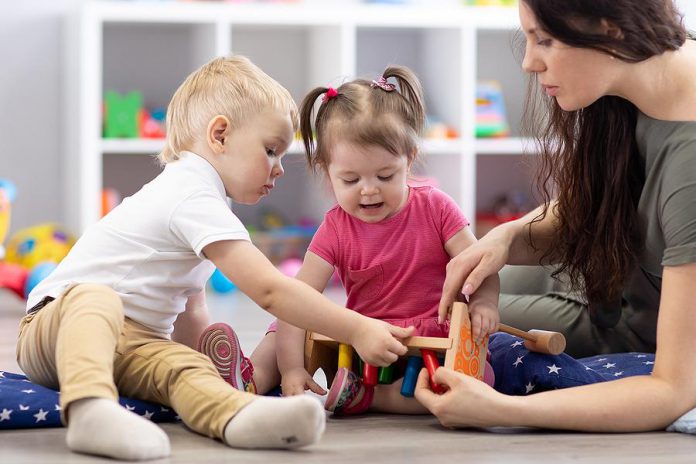
KJIPUKTUK (Halifax) – On May 26 we interviewed an early childhood educator (ECE) who worked in a daycare somewhere in rural Nova Scotia. She was worried that the reopening of daycare centres could expose workers and children to COVID-19.
In particular, she suggested that a lack of paid sick days would leave workers with an unfair burden when required to self-isolate, and she also worried about substitute ECEs traveling from daycare to daycare.
Why is nobody asking the workers what they think, she wondered. Is it because most ECEs are paid very little and are overwhelmingly female?
“We should really be paying attention to the order in which people are sent back into the economy, because that’ll tell us a lot about who it’s okay to put in danger, and who isn’t,” the ECE we interviewed told the Nova Scotia Advocate.
Well, childcare centres in Nova Scotia are scheduled to open on June 15, and news coverage focuses on the need for daycare so the economy can return to normal. Neither the risks that were mentioned in the interview, nor the unfair burden carried by the workers are getting much media attention.
But these risks are real. There is a sense that young children are not as easily affected by COVID-19, and that the opening of daycares carries fewer risks.
That may be, but earlier today the Montreal Gazette reported how a single case of an infected student at a Trois-Rivières school quickly caused an entire class to become infected. This happened despite physical distancing and other preventative measures.
Neither paid sick days nor the risks around substitutes are addressed in guidelines issued by the province. That’s asking for trouble.
The wearing of masks is voluntary and up to individual parents and workers, according to the provincial guidelines.
CUPE Nova Scotia, in a press release, points out that the number of masks government supplies to daycares is inadequate, and asks that “ECEs should be provided with at least the level of protective equipment being afforded to workers in the long-term care and acute care sectors, including procedure masks, face shields, gowns and gloves.”
There is plenty of evidence that even non-medical cloth masks dramatically reduce the number of virus particles emitted from our mouths—by as much as 99 percent.
‘We like for children to see our expressions and it’s really important for children that are non-verbal to be able to see the educator’s expression — whether they’re happy or sad or that kind of thing because they read those. And so wearing masks, not only might they frighten little children, but they wouldn’t be able to read our expressions,” the chair of the Nova Scotia Childhood Education Action Group and co-owner of a daycare centre told the CBC recently.
But where is the evidence to support this claim? Women have reared children while wearing niqāb, and there are no reports of the frequent mask use in Asian countries adversely affecting children.
Lack of masks, together with the use of substitute workers and the absence of paid sick leave were contributing factors in the many coronavirus-related deaths in long term care facilities across the country.
Let’s not make the same mistake twice.
See also: Building a successful Early Learning and Child Care System in Nova Scotia
With a special thanks to our generous donors who make publication of the Nova Scotia Advocate possible.
Subscribe to the Nova Scotia Advocate weekly digest and never miss an article again. It’s free!




It is impossible to keep very young children six feet apart at all times. It is impossible for the adults not to have physical contact with the children. If you put a mask on a child they would pull it off immediately. Children put everything in their mouths, including their fingers.
Some children who have had the virus are now developing an inflammatory condition about three months later and some have died because of it. Not to mention that kids can pass the virus to someone who may die from it.